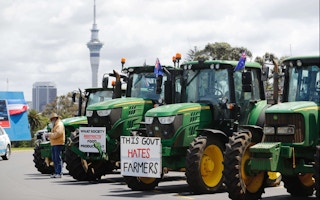Disruption is coming to the agriculture sector. Around the world, livestock farmers are leaving the land, policymakers are targeting the harmful environmental and social effects of industrial meat production, and consumers are shifting away from meat to embrace healthier, more sustainable alternatives. With the sector approaching a crossroads, decision-makers in government, industry and civil society will need to heed the lessons from major transitions in other industries and start preparing for them.
The preparation will require a careful inventory of farmers, workers and consumers’ needs. While farmers are growing older and leaving the land for other pursuits or retirement, the agriculture sector is struggling to attract new entrants – and not just in richer industrialised countries. For every farm manager under 40, there are three over the age of 65 in Europe; and from Sub-Saharan Africa to Asia, Latin America, and the Caribbean, the number of older people living in rural areas is increasing while the number of young people declines.
At the same time, farms are becoming larger, and small farm operations are being squeezed. Owing to the challenging economics of farming and the power of a small number of giant industry incumbents, farms are being consolidated in the name of efficiency and economies of scale. As a result, the European Union lost more than one-third of its farms, and 40 per cent of its livestock farms from 2005 to 2020. Policymakers are thus left to consider whether and how to protect family farms, and how to avoid the risks of animal welfare violations, poor working conditions, and diseases that are inherent in industrial livestock farming.
Policymakers are also waking up to the compelling body of evidence about industrial meat production’s environmental harms. While agriculture accounts for nearly one-third of all greenhouse gas emissions, livestock alone (particularly cattle) contribute nearly 15 per cent. Moreover, animal agriculture is the main cause of deforestation and biodiversity loss. Forests are razed to free up land not just for animal grazing but also for the additional crops needed to feed those animals. Beef production alone takes up some 60 per cent of land used for agriculture, even though it contributes less than 2 per cent of total calories consumed globally.
In Spain, factory-farm pollution has become so pervasive that pig manure has contaminated nearly one-quarter of all ground and surface water in the country. No wonder regulators are urgently seeking ways to target livestock pollution and produce more on less land. Given the increasing risk that infectious diseases will spread from animals to humans (zoonoses) through industrial livestock farming, the impetus for tighter regulation will only grow.
While livestock and agriculture have traditionally been excluded from most emissions reduction schemes, policymakers in Denmark, the Netherlands, and New Zealand are already working to close this gap, and many other countries will soon follow suit. The question now is not whether there will be increased regulation of the livestock industry, but what shape and form it will take. Farmers and companies alike should be prepared to adapt to changes that are now inevitable.
Finally, consumers, too, are shifting away from meat and dairy. Over the past decade, the average person’s meat consumption has decreased by almost 17 per cent in the United Kingdom and by 11 per cent in Germany. Notwithstanding a recent slowdown, there is still growth in the uptake of alternative proteins – a food source that produces only a tiny fraction of the negative environmental and animal-welfare effects of traditional meat products. Plant-based meat and milk sales are already trending up across the board in the EU, but also in countries like Thailand and South Africa. When these products reach taste and price parity with meat, their uptake by consumers could accelerate very quickly indeed.
Public policy also has a role to play. Livestock farming tends to be heavily subsidised in many countries, owing to the sector’s low margins and high levels of debt. As sales fall, declining revenue is likely to have significant welfare implications for farmers and other workers tied to the industrial meat production systems.
Given the complexities of these interacting trends, policymakers and corporate leaders need to start getting in front of this issue now. The experience of other sectors that have begun decarbonizing – not least energy – shows that a planned and guided transition is always better than an ad hoc, unmanaged process.
One need look no further than last year’s farmer protests in the Netherlands or New Zealand to see how abruptly climate policies can be disrupted when workers and communities feel left out. Unfortunately, we still have only a limited understanding of how best to integrate policy and corporate action to reduce food system emissions while also protecting livelihoods. Since resisting change is not an option, policymakers and corporate leaders would do well to start thinking about how they will manage it in the coming years.
Robin Willoughby and Nico Muzi are managing directors of Madre Brava, an organisation that advocates for companies, governments and financiers to provide affordable and sustainable food for all.
© Project Syndicate 1995–2023










